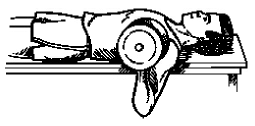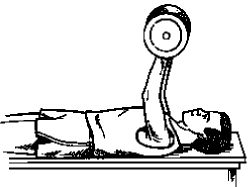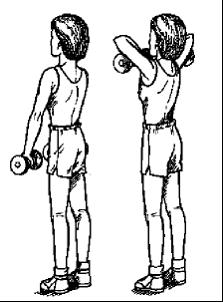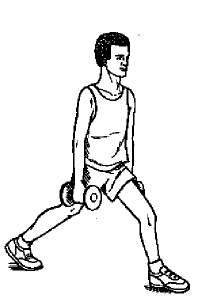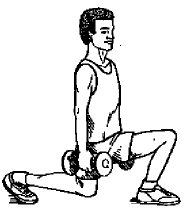Dr. MJ Bazos MD,
Patient Handout
HIV: Nutrition and
Exercise When You Have HIV
Even though you have HIV, you don't have to lose
weight. Good nutrition and exercise can improve your health and slow down your
HIV infection.
What problems could make it hard for
me to eat a healthy diet?
You might have trouble eating if you have sores
in your mouth, diarrhea, nausea or just a poor appetite. If you have trouble
eating and exercising, talk to your doctor.
What are some good tips for eating
right?
A few simple steps can help you make sure your
food is healthy and safe:
- Wash your hands with soap and water before you
eat so you won't get an infection from germs on your hands.
- Wash fruits and vegetables before you eat them or
cook them.
- Wash your hands with soap and water after you
touch raw fish, chicken or meat so you won't get an infection from germs on your
hands.
- Be sure that meat, eggs and fish are well cooked
before you eat them.
Here are
some ways to put good nutrition into your diet:
- Have high-calorie drinks like milkshakes. Adding
powdered milk can increase the nutrition in other drinks.
- Drink 8 to 10 glasses of filtered water each day.
- Keep nutritious snacks on hand.
- Eat high-calorie foods if you're losing weight.
- Call your doctor if you lose 5 pounds or more
when you didn't want to.
- Talk to your doctor about taking a multivitamin
every day. Take your multivitamin with a meal so your stomach won't get upset.
What can I do if
I'm having trouble eating?
- If you don't have an appetite--Try to eat your
favorite foods. Instead of eating 3 big meals each day, eat 6 to 8 small meals.
Drink high-calorie protein shakes with your meals or between meals.
- If you have diarrhea--Don't eat fried foods and
other high-fat foods like potato chips. Don't eat high-fiber foods. Instead, eat
bland foods like bread, rice and applesauce. Ask your doctor about taking
nutritional supplements, like Ensure.
- If you have mouth sores--Avoid citrus fruits like
oranges and grapefruit. Avoid very hot or cold foods. Don't eat spicy foods. Try
not to eat hard foods like chips and pretzels. Use a straw to drink liquids.
- If you have nausea and vomiting--Avoid drinking
any liquid with your meals. Eat 6 to 8 small meals each day instead of 3 large
meals. Eat foods with a mild flavor. Eat foods at a medium temperature, not hot
or cold. Drink nutritional supplements and sports drinks. Sit and relax for 30
minutes after you eat.
How can I increase
my strength?
An aerobic exercise like walking will help make
you stronger. It's good to begin exercising slowly. Little by little, increase
the amount of exercise. For example, you might start walking for 20 minutes 3
times a week. Then, after you get a little stronger, you can increase the
walking time to 30 minutes 4 times a week. Talk with your doctor before you
start.
Weight lifting is also a good way to increase
your strength. The pictures below show several basic exercises. Start by trying
to do a weight lifting exercise with a weight light enough that you can lift it
10 times. Lifting it once is called a "repetition." More than one repetition is
called a "set." Try to do 2 sets of 10 repetitions. Rest for 90 seconds between
each set.
You don't need to have fancy exercise equipment
to do weight lifting. You can use soup or juice cans, books and other objects
you have in the house. Start by lifting a weight that's comfortable for you and
doesn't cause too much strain.
In the first week, do 1 or 2 different weight
lifting exercises for each body part once or twice in the week. Start with a
small weight in each hand, like 10 to 15 ounces (a can of soup or a can of
beans), depending on the exercise. Each week increase the number of exercises
you do and the number of times you exercise. Rest for 1 to 2 days between
exercise sessions. When you're feeling sick, either exercise less or stop for a
while.
Dumbbell bench press (for your chest,
shoulders and the back of your arms)
Lie on a bench on your back. Hold a dumbbell in
each hand, with your hands lined up with your shoulders. Have the palms of your
hands facing down (toward your toes). Lower the dumbbells until your elbows are
below the bench (left picture). Don't relax your arms at the bottom of this
movement. As soon as your elbows are as low as they can go, move your arms up
again to the starting position. Don't "lock" your elbows at the top of the
movement (right picture). (This means, don't make your arms be exactly
straight--leave a tiny little bend in your elbows.)
Remember: You can use cans of soup instead of
dumbbells in these exercises.
Crunches (for your
abdomen)
Lie on your back on the floor. Keep your feet on
the floor and your knees bent. Fold your arms across your chest. Now raise just
your head and shoulders from the floor. This is a small and slow movement, like
a curl. Your back stays on the floor. Slowly lower your head and shoulders back
to the floor. When you are curling your head up, keep your chin up and your eyes
looking at the ceiling. You can add resistance to this exercise by holding a
weight on your chest.
Upright row (for your shoulders, upper back
and the front of your arms)
Hold a dumbbell in each hand. Let your arms be
almost straight and resting on the front of your thighs. Your palms should face
toward your legs. Now pull the dumbbells up to the level of your shoulders. Your
elbows should go up first. When your elbows are about even with your ears, lower
the dumbbells to your thighs again. Keep your knees bent just a tiny bit. Don't
let yourself lean backwards.
Lunge (for the front and back of your legs
and your buttocks)
Hold a dumbbell in each hand. Keep your arms
down at your sides. Your palms should face your legs. Your feet should be even
with your shoulders. Take a large step forward with your left leg. Lower your
right knee until it's 1 inch above the floor. Now straighten your left leg and
step back to the starting position. Repeat on the other leg. Remember that the
movement is up and down, not really forward. Keep your back straight and your
head up. Don't let yourself lean forward.
